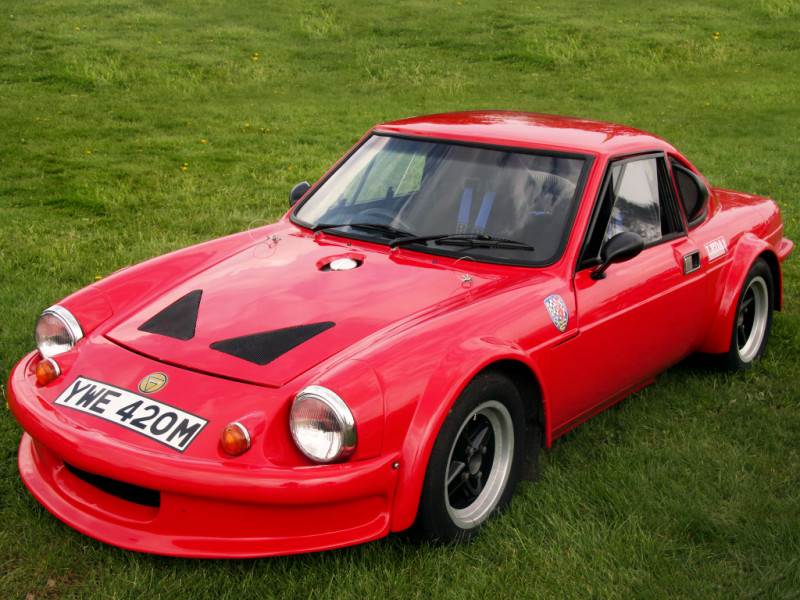Market trends - rear-engined sports cars
Cars with their engine in the back were all the rage back in the 1960s. We examine three different sports cars that stuck to the same recipe.
PORSCHE 912 (1965–1969, 1976 912 G-BODY)
In the mid-1960s Porsche introduced a model to bridge the price gap between its 356, which was still being produced at the time, and the 911. To the untrained eye the 912, launched in 1965, looked nigh-on identical to the 911.
However, where the 911 had six cylinders, the 912 made do with four. Cheaper but significantly less powerful than the 911, the 912 employed a 90bhp 1.6-litre flat-four pinched from the 356 SC, mounted at the rear. Nevertheless it was light and economical, making for an attractive package. The 912 was produced between 1965 and 1969, and for the first few years it outsold the 911. In addition to a coupe body style, Porsche also offered a Targa, but this sold in limited numbers – around 2500 compared with approximately 30,000 coupes. A second wind saw the 912 briefly re-introduced to North America in 1976 as the 912E. These final cars incorporated several new advents, perhaps most importantly a galvanised and zinc-coated chassis, plus higher-quality steel, meaning they are more resistant to corrosion.
For a time the 912 went unwanted and unloved, but as 911 prices accelerated, the “poor man’s 911” grew in desirability, with those priced out of 911 ownership turning to it for their Porsche kicks. Values have risen consistently; in 2015 a roadworthy 912 cost between £15,000- £30,000, but that was generally up to £30,000-£45,000 over the following five years, with only projects dropping below £20,000. In the last year, excellent 912s have been selling for around £55,000 at auction, and you can expect to pay more from a dealer.
ALPINE A110 (1963–1977)
Alpine’s first production car, the A106, was followed in 1960 by the A108, and it was this that formed the basis of the A110 of 1961. Raiding the Renault 8 parts bin heavily, the A110 was Alpine’s most successful offering yet. Early cars were powered by a 956cc Renault 8-derived four-cylinder engine, but capacities increased over the years, and the final roadgoing cars had a 1.6-litre motor. As with the Renault 8, engines were mounted at the rear.

Alpine A110s performed well on the rallying circuit, with victory at the 1963 Rallye des Lion a precursor to several key competition successes including winning the 1973 manufacturers’ World Rally Championship. Production ended in 1977, when the A110 was replaced by the A310. Enthusiasts argue over how many A110s were built, but it’s safe to assume that around 10,000 were made. That’s in part because alongside the cars built in Alpine’s Dieppe factory, other versions were built under license in Mexico, Bulgaria, and Spain.
Since the A110 was reinvented with a modern version in 2017, the 1960s original has enjoyed a greater level of interest. There is quite a variation in specification between the different versions, not least between road and competition variants. Over the last five years the entry-level price point for good cars has increased from below £40,000 prior to 2017 to approaching £60,000. However, the very best can sell for over £100,000.
GINETTA G15 (1968-1974)
Ginetta first revealed its fibreglass bodied G15 in prototype form at the 1967 Earls Court Motor Show. The rear-engined creation from the Essex-based Walklett brothers used the engine, transmission and rear suspension from the Imp Sport, with the front suspension made up of Triumph bits. The G15 was well received, being capable of reaching top speeds of around 100mph while returning 40mpg, and it proved popular on both road and track.

Early cars suffered overheating thanks to their Imp radiator, but a MkII version arrived to cure the issue in 1969 with a front-mounted radiator and electric fan. And there were significant further upgrades, including an improved chassis. In 1970, came the MkIII, which was fitted with an 875cc unit as standard, though customers could fit the 998cc unit from the Rallye Imp. This version is perhaps best identified via its wheels; Cosmic or Minilite alloys now featured. As the G15 was sold as kit car, it suffered with VAT charges in 1973-1974 – the latter being its final year of production.
The G15 is a surprisingly practical sports car. The glassfibre body sat atop the steel chassis does not cause the same headaches as a metal bodied car of the same vintage, while the Rootes and Triumph connection makes parts readily available. Top end values have remained static over recent years. A nice example will set you back between £8000 and £12,000. However, while £5000 used to bag a roadworthy car, you’ll now need a slightly larger budget.


